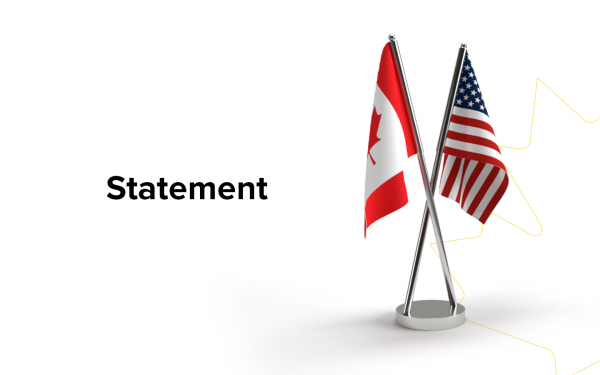While Canada frets, the U.S. moves into high gear on clean energy
As published in the Toronto Star
There’s no shortage of ambition when it comes to the federal government’s plans to cut emissions, change the way cars and trucks are made, and electrify large chunks of Canada’s economy.
There is, however, a shortage of implementation.
When Natural Resources Minister Jonathan Wilkinson and Environment Minister Steven Guilbeault both held major events earlier this month to explain how that massive electrification effort would roll out, they were adamant that their announcement would bring us affordable electricity in ample supply, benefiting consumers and businesses in every corner of the country.
But we have heard this kind of story before, and there are still many subplots left unresolved.
That’s not the case south of the border.
Over the past few days, we in Canada looked on as U.S. President Joe Biden celebrated the one-year anniversary of his trademark legislation, the Inflation Reduction Act (IRA) that inserts the U.S. government so centrally into the global market for clean energy.
A Bank of America analysis figures there have already been 270 new clean projects announced in the U.S. stemming from the Act, and there’s a lot more to come, according to Reuters. The report projects $132 billion in new investment next year and the year after. And when all is said and done, the IRA is expected to inject trillions of dollars into America’s energy transition.
Electric vehicles, batteries, solar, wind, nuclear and many thousands of jobs are the direct result. And the U.S. economy will see growth, improved productivity and innovation.
“Since the Inflation Reduction Act’s passage, we’ve begun providing the long-term certainty that businesses need to invest at scale,” Treasury Secretary Janet Yellen writes in the Wall Street Journal. “With expanded demand- and supply-side tax incentives, companies in the clean-energy industry are finding an even greater commercial case to invest in the U.S., creating high-quality, well-paying American jobs.”
That’s great for the American economy, and probably also the climate. But in Canada, we’re still trying to figure out how to react. While the Biden administration, to no surprise, financed a wholesale energy transition with billions of dollars’ worth of incentives for consumers and producers alike, Canada fretted.
Tax incentives to match the U.S. came through in principle in the March budget, and designer deals meant to establish electric-vehicle supply chains in Canada came through in the spring. But we are still sorting through the mechanics of the tax measures even as other jurisdictions, especially the U.S., launch theirs into high gear.
Similarly, we have seen both the U.S. and Europe aggressively confront the length of time it takes to issue permits for new projects — be they clean energy, natural resources or infrastructure. In Canada, the federal government is looking at that, consulting and thinking hard, but has not yet put those thoughts into action.
This is not a new problem. They didn’t start from scratch. And meanwhile, months — and growth opportunities — are slipping away.
Predictably, the U.S. is a magnet for private-sector ambition.
Just this week, B.C.-based Carbon Engineering was scooped up by Occidental Petroleum, an American oil company that is investing in emissions reductions, spurred on by Biden’s IRA.
That’s a tragedy for the Canadian economy, and indeed for Canada writ large, given the tax dollars and emissions reductions at stake.
Carbon Engineering spearheaded innovation around direct air capture technology, which extracts large amounts of carbon dioxide from the air and stores it underground, reducing emissions. Its research and development were supported by federal and provincial funding.
But while Canadians can always claim they were the source of the innovation, most of the economic benefits will now be stateside.
And this is in the wake of Calgary-based TC Energy developing a massive carbon capture and sequestration project in North Dakota — certainly not the only company seriously tempted to expand in the U.S. to take advantage of the incentives and policy certainty stemming from the IRA.
For sure, companies expand and contract, come and go, and Canada’s business history is a constant square-dance with Americans rich with cash and power.
But Canada’s energy transition requires all hands actively on deck — governments, innovators, businesses and investors. Our competitiveness is at stake, and so is our ability to cut emissions successfully in a way that we can afford.
It’s encouraging to see all those players talk big about confronting climate change. But at this point, with regulations half-designed, the rules of the game only partially spelled out, and permitting processes dragging on as always, it’s time to tie up the loose ends and get on with it.
As the federal cabinet meets to set its course for the fall, solid policy that provides a predictable investment environment would be a great outcome.
The future is undoubtedly all about electricity and chopping emissions, but getting from here to there takes more than ambition.









